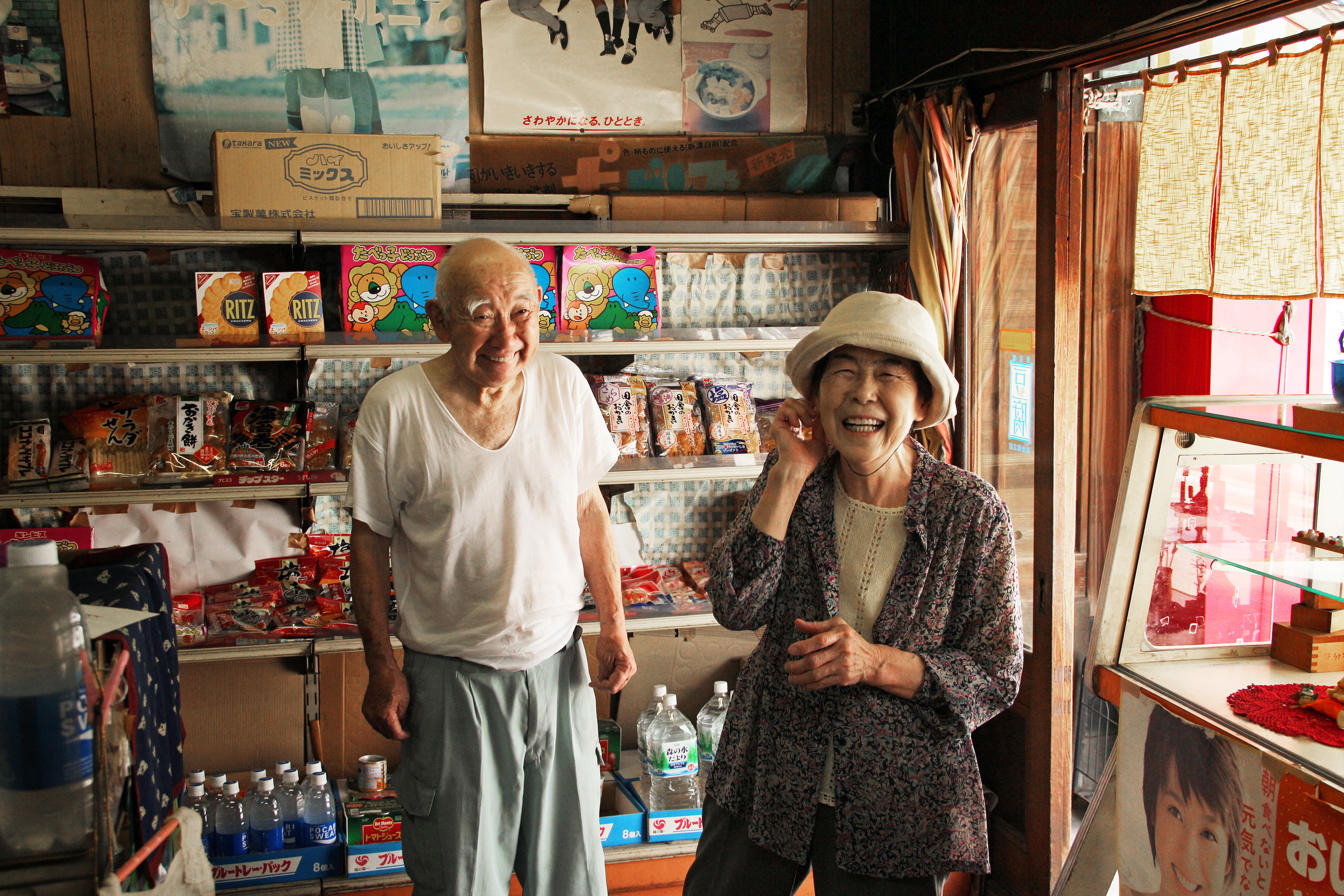The nexus between Tokyo's rainy season and the heat of summer brings beastly humidity. I choose to explore Akabane Iwabuchi, an area in Tokyo's Kita Ward, for the possibility of cool breezes coming off the nearby Arakawa River. But that idea is toast the second I exit the subway; sunlight pulses off the concrete intersection of Kanpachi and Kita Hon Avenues, and leaden air churns in the wake of rattling trucks and cars. Effluent from a corner ramen shop turns gamey before it reaches the sewer and boxy utilitarian low-rise buildings, in every nuance of beige, work like oven walls. I'm instantly wilted.
Only an enormous mosaic, covering the side of a four-story building facing the intersection, offers any visual relief. "Sand Mountain," a 1954 work by illustrator Rokuro Taniuchi (1921-81), portrays a blushing girl and frisky puppy leaving footprints as they climb a dune backed by dark blue water. Taniuchi created only two monumental tile works in Tokyo: one at the busy Omotesando crossing featuring a sun-drenched beach scene, and Akabane Iwabuchi's "Sand Mountain" with its, thankfully cooler, seaside colors.
Veering down a backstreet in search of shade, I meet two women in gauze tunics and broad-brimmed hats at the entrance to what appears to be a newly built temple. "Actually, Shokoji is the oldest temple in the area," 73-year-old Junko Tsuchiya informs me. Her daughter, Satoe Tsugita, 42, nods and suggests that I interview the priest. They accompany me to the temple offices, secure me an appointment for mid-afternoon, then offer to tell me about their hometown over lunch.



